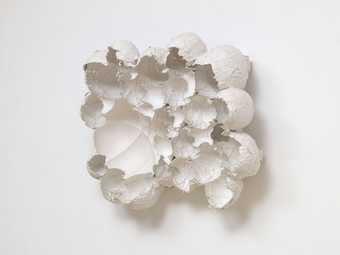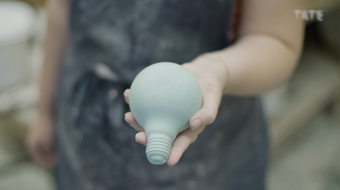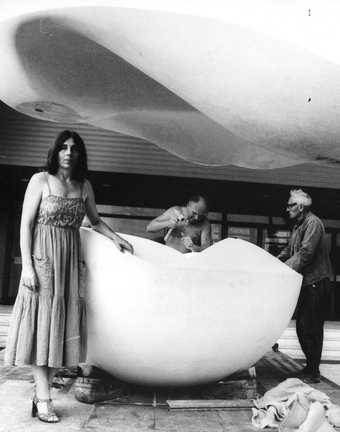Here, we learn more about how Maria Bartuszová used innovative methods to create her sculptures:
Five things to know about Maria Bartuszová’s unique sculptures
An artist who redefined the world of sculpture using plaster casting
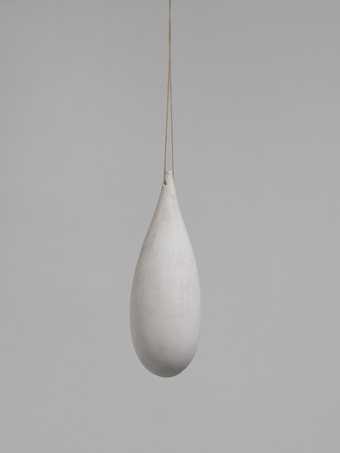
Maria Bartuszová
Untitled (Drop)
(1963–4)
Tate
1. She developed her own method of casting plaster
While playing with an inflatable ball with her young daughter, Bartuszová was inspired to cast with balloons. By pouring liquid plaster inside a small balloon and shaping it, she was able to model abstract forms using a combination of gravity, air pressure and touch – often placing the forms in water. She worked quickly, using this process to create both solid and delicate artworks.
This was one of many innovative techniques she created; later she also worked with the physical qualities of air (using her own breath, for example). And in the 1980s, she poured plaster over inflated balloons to produce a cast, before allowing them to burst.

Tree, 1987, site-specific installation in the artist’s garden in Košice, Slovakia 1987, printed 2022 Estate of Maria Bartuszová, 1936-1996 (Kosice, Slovakia) Photographer: © Gabriel Kladek
2. Her works were inspired by nature
From raindrops and eggs to the human body, Bartuszová took inspiration from organic forms and the natural world around her, including growth, decay, wind, rain and melting snow. By the early 1960s, her more abstract sculptures were inspired by shapes found in nature. Her early sculptures also look like living forms, from germinating seeds to dew drops.
Towards the end of her career, Bartuszová began to place her works in the trees in her garden, to photograph them.
‘I would also like to realise more things directly outside – to connect, to merge my work in the work of nature organically.’
3. Some sculptures were used in workshops for children
She created ‘folded’ sculptures of three, four or more parts to be assembled like a puzzle, inspired by intuition, play, therapy and meditation. They were used in innovative workshops for blind and partially sighted children. The workshops encouraged them to explore these objects and shapes using movement and touch.
This included large plaster shapes resembling wheat grains and raindrops, alongside her folding sculptures and ‘assembly kits.’
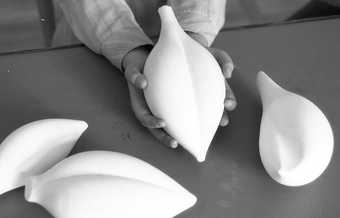
2nd Sculpture Symposium for blind and partially sighted children at the Elementary School for Partially Sighted Children, in cooperation with Gabriel Kladek, 1983 Levoča, Slovakia 1983, printed 2022 Estate of Maria Bartuszová, 1936-1996 (Kosice, Slovakia) Photographer: © Gabriel Kladek
4. She used different types of materials in her work
Bartuszová created full and bulging plaster forms that could be held in the hand, including aluminium and bronze casts, and plaster shapes tied with rope. She also created work compressed by stones as well as wood, and hollowed shapes.
In contrast to her delicate plaster work in the sixties, when her sculptures could be taken apart and reassembled, her sculptures in the 1980s resembled abandoned cocoons and empty shells.
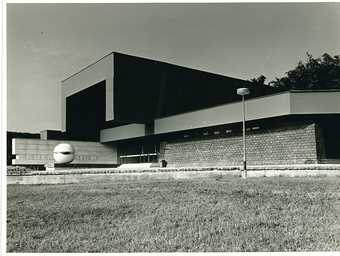
Metamorphosis, Two-Part Sculpture, crematorium, Košice, Slovakia 1982, printed 2022 Estate of Maria Bartuszová, 1936-1996 (Kosice, Slovakia) . Photographer: Alexander Jiroušek. Reproduced from the Archive of Maria Bartuszová, Košice.
5. She also created larger projects
She was also commissioned to create several large public works, including a children’s climbing frame and slide, fountains, and a stone and bronze sculpture for the courtyard of Košice Technical University Hall of residence. One of her most ground-breaking public works is the monumental Metamorphosis, Two-Part Sculpture 1982.

Maria Bartuszová next to the slide at the kindergarten on Sládkovičova Street in Revúca, 1970, unknown photographer. Reproduced from the Archive of Maria Bartuszová, Košice.
The exhibition Maria Bartuszová is at Tate Modern 20 September 2022 – 16 April 2023.

